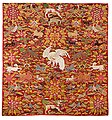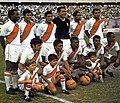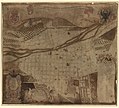Introduction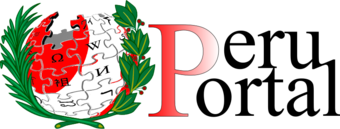
Peru, officially the Republic of Peru, is a country in western South America. It is bordered in the north by Ecuador and Colombia, in the east by Brazil, in the southeast by Bolivia, in the south by Chile, and in the south and west by the Pacific Ocean. Peru is a megadiverse country, with habitats ranging from the arid plains of the Pacific coastal region in the west, to the peaks of the Andes mountains extending from the north to the southeast of the country, to the tropical Amazon basin rainforest in the east with the Amazon River. Peru has a population of over 32 million, and its capital and largest city is Lima. At 1,285,216 km2 (496,225 sq mi), Peru is the 19th largest country in the world, and the third largest in South America. Peruvian territory was home to several cultures during the ancient and medieval periods, and has one of the longest histories of civilization of any country, tracing its heritage back to the 10th millennium BCE. Notable pre-colonial cultures and civilizations include the Caral–Supe civilization (the earliest civilization in the Americas and considered one of the cradles of civilization), the Nazca culture, the Wari and Tiwanaku empires, the Kingdom of Cusco, and the Inca Empire, the largest known state in the pre-Columbian Americas. The Spanish Empire conquered the region in the 16th century and Charles V established a viceroyalty with the official name of the Kingdom of Peru that encompassed most of its South American territories, with its capital in Lima. Higher education started in the Americas with the official establishment of the National University of San Marcos in Lima in 1551. Peru's population includes Mestizos, Amerindians, Europeans, Africans and Asians. The main spoken language is Spanish, although a significant number of Peruvians speak Quechuan languages, Aymara, or other Indigenous languages. This mixture of cultural traditions has resulted in a wide diversity of expressions in fields such as art, cuisine, literature, and music. (Full article...) Entries here consist of Good and Featured articles, which meet a core set of high editorial standards.
LANSA Flight 502 was a Lockheed L-188A Electra operated by Líneas Aéreas Nacionales Sociedad Anónima (LANSA) which crashed shortly after takeoff from Quispiquilla Airport near Cusco, Peru, on August 9, 1970, after losing all power from one of its four engines. The turboprop airliner, registered OB-R-939, was bound from Cusco to Lima, carrying 8 crew and 92 passengers. All but one of the occupants died from injuries sustained from impact forces and post crash fire. Two people on the ground were also killed. There were 49 American high school exchange students on board, all of whom perished. A Peruvian government investigation concluded that the accident was caused by improper execution of engine-out procedures by the flight crew and lack of proper maintenance. LANSA was fined and its operations were suspended for 90 days. At the time, the crash was the deadliest ever in Peruvian history before being surpassed by Faucett Perú Flight 251 in 1996. (Full article...) Selected image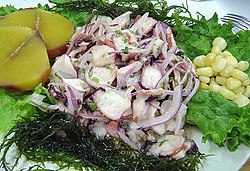 Photo credit: Ausum
Ceviche is a citrus marinated seafood dish. In addition to adding flavor, the citric acid causes the proteins in the seafood to become denatured, which pickles or "cooks" the fish without heat. The result tastes more like a cooked dish and less like raw fish preparations such as Japanese sashimi. Traditional style ceviche was marinated for up to three hours; modern style ceviche usually has a very short marinating period. (more...) Selected battleThe Battle of Tacna, also known as the Battle of the Halt of the Alliance (Spanish: Batalla del Alto de la Alianza), effectively destroyed the Peru-Bolivian alliance against Chile, forged by a secret treaty between both countries signed on 1873. On May 26, 1880, the Chilean northern operations army led by General Manuel Baquedano Gonzalez, conclusively defeated a Peru-Bolivian army commanded by the Bolivian President General Narciso Campero, after almost five hours of fierce combat. This battle took place at the Intiorko hill plateau, a few miles north of the Peruvian city of Tacna. As a result of this battle, the Bolivian army returned to its country, and never participated in the conflict again, leaving Peru to fight the rest of the war by themselves . Also, this victory consolidated the Chilean domain over the Tarapacá Province, territory definitively annexed to Chile after the sign of the Tratado de Ancón (English: Treaty of Ancon), on 1884, which ended the war. (more...) In this month
General imagesThe following are images from various Peru-related articles on Wikipedia.
Selected article -Vinicunca, or Winikunka, also called Montaña de Siete Colores (literally: Mountain of seven colors), Montaña de Colores (Mountain of colors) or Montaña Arcoíris (Rainbow Mountain), is a mountain in the Andes of Peru with an altitude of 5,036 metres (16,522 ft) above sea level. It is located on the road to the Ausangate mountain, in the Cusco region, between Cusipata District, province of Quispicanchi, and Pitumarca District, province of Canchis. Tourist access requires a two-hour drive from Cusco and a walk of about 5 kilometers (3.1 mi), or a three-and-a-half-hour drive through Pitumarca and a one-half-kilometre (0.31 mi) steep walk (1–1.5 hours) to the hill. As of 2019, no robust methods of transportation to Vinicunca have been developed to accommodate travelers, as it requires passage through a valley. (Full article...) Did you know (auto-generated) -
CategoriesRelated portalsSelected quote -
American colonel in the Revolutionary War William Prescott 1726–1795
Basic facts & figuresMore did you know...
Peru TopicsRecognized content
Featured articlesFeatured listsGood articles
WikiProjectsThings you can do
New articlesThis list was generated from these rules. Questions and feedback are always welcome! The search is being run daily with the most recent ~14 days of results. Note: Some articles may not be relevant to this project.
Rules | Match log | Results page (for watching) | Last updated: 2024-11-23 22:13 (UTC) Note: The list display can now be customized by each user. See List display personalization for details.
Associated WikimediaThe following Wikimedia Foundation sister projects provide more on this subject:
Discover Wikipedia using portals | |||||||||||||||




